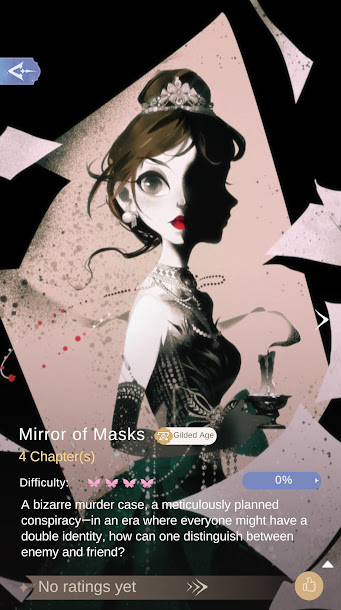Review: Thief of Cahraman Trilogy
Lucy Tempest is the hottest new author among the indie fairy tale adaptation scene. I was a little hesitant to read her premiere gender-bent "Aladdin" novel Thief of Cahraman because it required me to purchase and read two other novels, Prince of Cahraman and Queen of Cahraman just to find out how it ends. I've enjoyed other trilogies that told a complete story within each book while just leaving one thing unresolved at the end to make way for a sequel, but that was not the case here. It was a bit of a struggle for me to complete all three books within the course of a week so that I could write a review, especially when so few important things happened in the story until the end. In fact, I would even say it would be possible to skip over the second book entirely without missing too much of the overall story. Of course, this is speaking from my own personal preference. If you're the type of person who doesn't like your stories to end in a single book, you might love this trilogy.
The Thief of Cahraman trilogy tells the story of Adelaide, who is a female version of Aladdin. While she does start out as a thief who steals to survive, her story doesn't involve many genies or wishes until it gets toward the end. I was hoping that the gender swap would give Adelaide a chance to go after her prince and win him over with the help of a little magic instead of needing to compete for him with a bunch of catty noble girls like in so many other princess books. Sadly, that turned out to be the exact plot of Thief of Cahraman and Prince of Cahraman. Even though I've never read another adaptation of "Aladdin," the first two books in this trilogy did not feel fresh or original because they shared more traits with "Cinderella" or "The Princess and the Pea," in which a young woman must prove herself worthy of a prince's hand and does so in an unexpected way, than the story of "Aladdin." Many authors use these competitions as a way of introducing other princesses whose stories they intend to write about in future books, but that doesn't make it any less of a cliché.
Adelaide is tossed into the competition for Prince Cyaxares by a wicked sorceress named Nariman who sends her to steal back a lamp that she claims the king stole from her. She threatens to harm Adelaide's best friend, Bonnie, who appears to be this universe's version of Belle from "Beauty and the Beast," if she is unsuccessful in her task. There were several other fairy tale references casually sprinkled in throughout the books such as Ella from "Cinderella" and another character who turned out to be this universe's Sleeping Beauty, but most of the books focused on gradually revealing the backstory of Adelaide and Prince Cyaxares's parents from before they were born. All three books are fairly fast-paced, but there are so many intricate details about what happened to Nariman and everyone's parents decades earlier that it does get kind of tedious toward the end. At a certain point, I wanted to yell "Can we just get back to the present already?"
The "Aladdin" story elements finally start to pop up in the last book, Queen of Cahraman. There is a very strong theme of "Be careful what you wish for." Some elements that were specific to the Disney version appear in this book as well such as the Cave of Wonders and the magic carpet (which originally only appeared in other stories from 1,001 Arabian Nights). The villainess Nariman shares many traits with Disney's Jafar. Adelaide eventually gets her hands on the ring from the original tale, which contains a less powerful genie than the one in the lamp. I really enjoyed the reveal of the ring's powers in this book because it only works sometimes and only for specific wishes, so Adelaide is able to use it as a helpful tool while still needing to do most of the work herself. The reveal of where the ring's powers come from was also very entertaining. I only wish she had recovered it earlier because waiting for her to go through the generic princess bride contest in the first two books was pretty bland.
Though a gender-bent "Aladdin" story is an innovative concept for a princess book, there were a few things I wish the Thief of Cahraman books had done a little differently. Lucy Tempest's Fairy Tales of Folkshore series is already going to contain multiple books about different princesses, so I don't think it was necessary to require readers to purchase three books just for the first story. I would have loved to see a wily female thief fall in love with a prince whom she feels unworthy of and wins him over through her own volition instead of being forced into a sexist contest with a bunch of stuck-up princesses. It also would have been nice if the magical wish-granting elements had come into play sooner than they did. There were several typos throughout all three books, which is more of a sign of poor editing than poor writing, but it wasn't enough to distract too much from the story. If you like long drawn-out backstories with clever heroines, this trilogy is for you. If you prefer a quick and easy read, I'd go with one of the many other fairy tale authors out there instead.












Comments